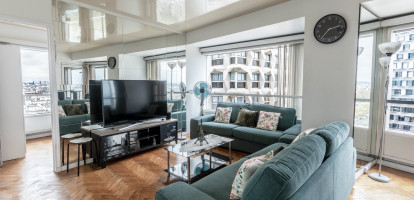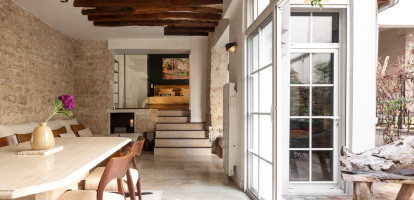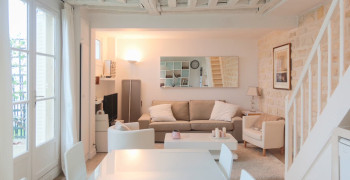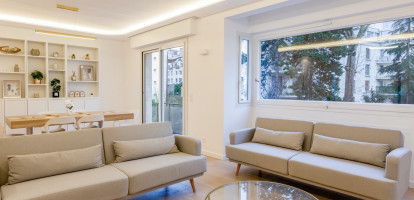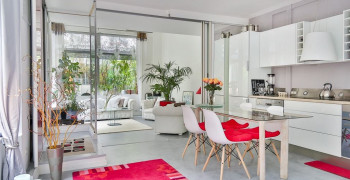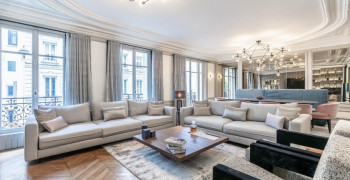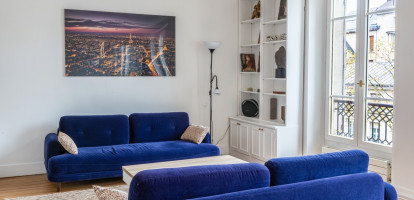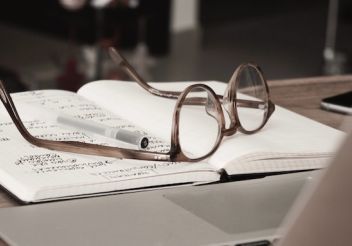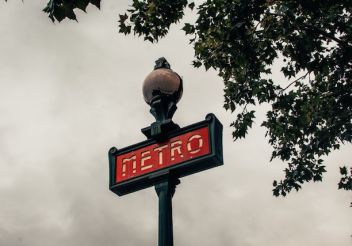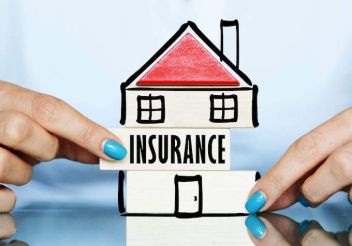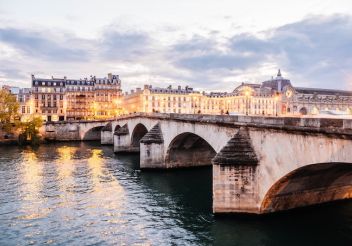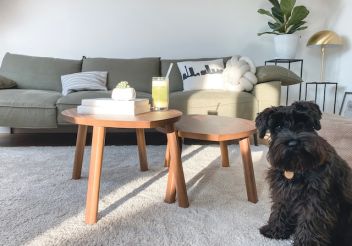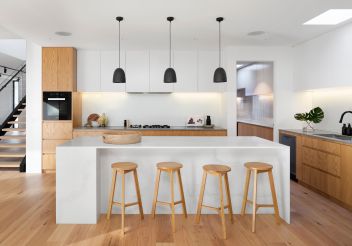The landlord of a furnished or unfurnished rental property can pass on a portion of the building management fees they pay to the property management company ("syndic") to the tenant, which are called rental charges (or recoverable charges).
What are the charges recoverable from the tenant?
In furnished rentals as in unfurnished rentals, the list of charges is fixed by law. Any expense not appearing in the following list cannot be passed on to the tenant. Recoverable expenses are divided into three main categories of costs:
- services related to housing and the use of the building
- routine maintenance and small repairs in the building's *common areas
- taxes related to services from which the tenant benefits directly.
*Common areas (partie communes): These are parts of the building that all residents use. Each owner has a share in the joint ownership of these common areas and is responsible for a portion of the expenses associated with their maintenance. Common areas include the stairs, elevator, courtyard, access roads, and more.
Services related to housing and the use of the building :
1. Caretaker or janitor (with an official accommodation) if there is any in the building
The landlord can recover a portion of the wages paid to caretakers and their related social and tax charges from the tenant, precisely 75% if the caretaker cleans common areas and takes out the trash or 40% if the caretakers do only one of these tasks.
2. Elevators
The electricity-related costs and those related to the elevator maintenance contract (regulatory verification, products, small maintenance materials), as well as minor repairs to the cockpit, such as replacing buttons, door hinges, and servicing bearings and fuses, are expenses can be passed on to the teanant.
3. Coldwater, hot water, and collective heating
Expenses relating to water consumption and heating are recoverable from the tenant. These consumptions are:
- cold and hot water for tenants
- the water necessary for the routine maintenance of common areas
- water required for the regular maintenance of outdoor spaces
- products essential for the operation, care, and treatment of water
- supply of energy, whatever its nature
-
operation of general and individual meters, as well as maintenance of smoke filters
-
routine maintenance and minor repairs of hot water or heating equipment
-
repairing seal leaks
4. Routine maintenance and small repairs in the common areas of the building, including outdoor areas
The tenant is responsible for certain expenses related to the shared spaces within a building accessible to all residents or tenants (like hallways, stairwells, shared recreational areas), including
- electricity
- cleaning supplies (like brooms and trash bags)
- maintenance of the timer, carpets, garbage chutes
- repair of cleaning equipment such as the vacuum cleaner
- staff costs
5. Individual installations
The tenant is responsible for certain costs related to individual installations, including:
- Heating and hot water production
- Water supply in private areas (including checking connections, adjusting water flow and temperature, fixing any issues, replacing seals in toilets)
6. Outdoor spaces
The tenant is responsible for some costs related to the outdoor areas of the residence such as driveways, parking lots, green spaces, playground, and these costs are mainly:
- cutting, weeding, weeding, raking, cleaning and watering operations
- Gardening products (fertilizers, seeds, flowers, plants, replacement plants except those used for repairing beds, hedges, bactericidal, and insecticides).
Rental taxes on services from which the tenant benefits directly:
How are rental charges collected?
The rental charges recovery from the tenant -called regularization- occurs in two stages for unfurnished rentals. First, the tenant pays a provision on charges every month; then, an adjustment occurs at the end of each rental year.
In the case of furnished rentals, the tenant pays either a provision as unfurnished rentals or a monthly flat-rate. Taking inflation into account, the lessor can re-evaluate the flat-rate amount yearly according to the IRL index (same as the rent).
Nota Bene: Whatever the mode of charges chosen, the lessor must only pass on to the tenant the costs related to the rented property. The statement of charges gives an account per lot, so if the landlord also has a cellar, a maid's room, a parking space, but only rents the apartment, he can only pass on the charges related to the apartment and not to the others.
1.The provision for charges
If the accommodation is rented unfurnished, the tenant pays each month (or trimester) a "provision for charges" with his rent. The amount of this provision must be mentioned in the lease contract.
This provision is calculated based on the figures established during the previous adjustment of charges or provisional budget if the accommodation is co-ownership. The advanced provision paid by the tenant is adjusted each year according to actual expenditure.
2.Annual regularization
The landlord must send his tenant a statement of charges at least one month before the rental charges' yearly adjustment.
Each expense must inform what is incumbent to the owner and the tenant, and show the repartition between all building's tenants. This document allows the tenant to check that the claimed charges are theirs and understand any variations from one year to the next.
The difference between the provision already paid by the tenant and the year's actual expenses may favor or not the tenant. If the provision is less than the exact amount of rental charges, the lessor may request the additional costs. Otherwise, the lessor must return the overpayment to the lessee.
Important
- From the date the tenant receives their rental charges statement, all documents (invoices, maintenance contracts, etc.) must be made available to the latter for 6 months.
- Suppose the lessor has not carried out the annual regularization of charges within one year of their due date (forgetfulness, etc.). In that case, the lessee may ask to pay the additional costs claimed over 12 months. (See letter*)
Note: The lessor can claim any backlog of charges or rents, only for three years. Any arrears older than three years are lost for the lessor.
3.The charge package
The amount of the fixed charge applied for furnished rentals must be indicated in the lease contract.
For leases signed after March 27, 2014, the "lump sum" rental charges do not get regularized. But if the sum paid is lower than the actual expenses, the lessor cannot claim a supplement from his tenant.
Liste des charges récupérables.
I. - Lifts and freight elevators.
- Electricity expenses.
- Operating expenses, routine maintenance, minor repairs:
a) Operation: :
- periodic inspection, cleaning, and lubrication of mechanical parts;
- biannual examination of cables and annual check of parachutes;
- yearly cleaning of the bowl, the top of the cabin and the machinery;;
- troubleshooting not requiring repairs or supply of parts;
- Keeping a file by the maintenance company mentioning the technical visits, incidents, and essential facts concerning the device.
b) Supplies relating to products or small maintenance equipment (rags, grease, and oils required) and cabin lighting lamps.
c) Minor repairs:
- of the cabin (send buttons, door hinges, door contacts, automatic door closers, cabin slides, threshold safety device and photoelectric cell);
- bearings (mechanical, electrical or pneumatic door closers, electromechanical locks, door contacts, and call buttons);
- motor brushes and fuses.
II. - Cold water, hot water and collective heating of private premises and common areas.
1.Related expenses:
- Cold and hot water from occupants of the building or all the residential buildings concerned;
- To the water necessary for the routine maintenance of the common parts of the said building (s), including the wastewater treatment plant;
- Water required for the regular maintenance of outdoor spaces;
- The expenses relating to water consumption include all taxes and fees and the sums due for the sanitation fee, excluding those to which the owner is liable according to article L. 35-5 of the public health code;
- Products necessary for the operation, maintenance and treatment of water;
- Electricity;
- Fuel or energy supply, whatever its nature.
2. Dépenses d'exploitation, d'entretien courant et de menues réparations :
a) Operation and routine maintenance:
- adjustment of the flow rate and temperature of the domestic hot water;
- checking and adjustment of control, servo, aquastat and pump safety devices;
- troubleshooting;
- power of the connections and the supply of electric water heaters, control of the intensity absorbed;
- checking the state of resistances, thermostats, cleaning;
- adjustment of thermostats and management of water temperature;
- check and repair of the cold water - hot water connections;
- control of security groups;
- the lapping of the valve seats of the taps;
- adjustment of the flushing mechanisms.
- entretien des épurateurs de fumée ;
- opérations de mise en repos en fin de saison de chauffage, rinçage des corps de chauffe et tuyauteries, nettoyage de chaufferies, y compris leurs puisards et siphons, ramonage des chaudières, carneaux et cheminées ;
- conduite de chauffage ;
- frais de location d'entretien et de relevé des compteurs généraux et individuels ;
- entretien de l'adoucisseur, du détartreur d'eau, du surpresseur et du détendeur ;
- contrôles périodiques visant à éviter les fuites de fluide frigorigène des pompes à chaleur ;
- vérification, nettoyage et graissage des organes des pompes à chaleur ;
- nettoyage périodique de la face extérieure des capteurs solaires ;
- vérification, nettoyage et graissage des organes des capteurs solaires.
b) Menues réparations dans les parties communes ou sur des éléments d'usage commun :
- réparation de fuites sur raccords et joints ;
- remplacement des joints, clapets et presse-étoupes ;
- rodage des sièges de clapets ;
- menues réparations visant à remédier aux fuites de fluide frigorigène des pompes à chaleur ;
- recharge en fluide frigorigène des pompes à chaleur.
III. - Installations individuelles.
Chauffage et production d'eau chaude, distribution d'eau dans les parties privatives :
1. Dépenses d'alimentation commune de combustible ;
2. Exploitation et entretien courant, menues réparations :
a) Exploitation et entretien courant :
- réglage de débit et température de l'eau chaude sanitaire ;
- vérification et réglage des appareils de commande, d'asservissement, de sécurité d'aquastat et de pompe ;
- dépannage ;
- contrôle des raccordements et de l'alimentation des chauffe-eau électriques, contrôle de l'intensité absorbée ;
- vérification de l'état des résistances, des thermostats, nettoyage ;
- réglage des thermostats et contrôle de la température d'eau ;
- contrôle et réfection d'étanchéité des raccordements eau froide - eau chaude ;
- contrôle des groupes de sécurité ;
- rodage des sièges de clapets des robinets ;
- réglage des mécanismes de chasses d'eau.
b) Minor repairs:
- replacement of bimetallic strips, pistons, membranes, water boxes, piezoelectric ignition, valves and seals of gas appliances;
- rinsing and cleaning of the heating elements and pipes;
- replacement of gaskets, valves and valve glands;
- replacement of the gaskets, floats, and bell gaskets of the toilet flushes.
IV. - Common areas inside the building or all residential buildings.
1. Related expenses:
Has electricity;
Aux fournitures consommables, notamment produits d'entretien, balais et petit matériel assimilé nécessaires à l'entretien de propreté, sel.
- Consumable supplies, particularly cleaning products, brooms, and similar small equipment necessary for maintaining cleanliness, salt.
- With gasoline and oil;
- Consumable supplies used in routine maintenance: :
- light bulbs or tubes, fertilizers, insecticide products, seeds, flowers, plants, and replacement plants, except those used for repairing flower beds or hedges.
2. a) Operation and routine maintenance:
Cutting, weeding, weeding, raking, cleaning, and watering operations concerning:
- aisles, parking areas, and surrounding areas;
- green spaces (lawns, beds, shrubs, hedges, flower beds);
- play areas;
- basins, fountains, gutters, rainwater drainage pipes;
- maintenance of horticultural equipment;
- replacement of sand in bins and small play equipment.
b) Painting and minor repairs to garden benches and play equipment and fences.
VI. - Hygiene.
1. Expenses of consumable supplies:
- Plastic and paper bags required for the disposal of rejects;
- Products relating to pest control and disinfection, including dry columns for refuse chutes.
2. Operation and routine maintenance:
- Maintenance and emptying of cesspools;
- Maintenance of garbage conditioning equipment.
3. Elimination of rejects (personnel costs).
VII. - Miscellaneous equipment of the building or of all residential buildings.
1. The supply of energy necessary for mechanical ventilation.
2. Operation and routine maintenance:
- Sweeping of ventilation ducts;
- Maintenance of mechanical ventilation;
- Maintenance of automatic or coded opening devices and intercoms;
- Periodic visits except for regulatory safety checks, cleaning and lubrication of the fixed handling equipment for glass facade cleaning nacelles.
3. Miscellaneous :
Subscription of telephone sets available to tenants.
VIII. - Taxes and fees.
- Right of a lease
- Garbage collection tax
- Sweeping tax
Credits Picture @Scott Graham
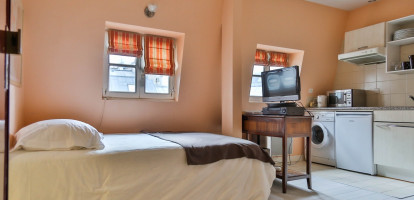


 Français
Français

